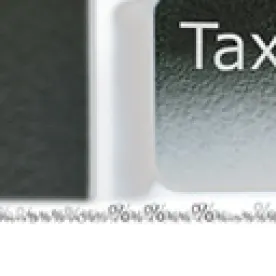Consistent with prior judicial precedent, the U.S. Court of Appeals for the Fifth Circuit recently applied a literal interpretation of the Subpart F inclusion rules based on the plain meaning of Sections 951 and 956.
The U.S. Court of Appeals for the Fifth Circuit in Rodriguez v. Commissioner, No. 12-60533 (July 5, 2013), recently affirmed the U.S. Tax Court’s holding that, absent a specific rule, an inclusion under Subpart F is not a dividend for purposes of Section 1(h)(11). As a result, the taxpayers’ income attributable to their ownership in a controlled foreign corporation (CFC) was taxed at ordinary income tax rates (a top rate of 35 percent) instead of the more favorable 15 percent rate for qualified dividend income.
Sections 951 and 956 are intended to limit the deferral of taxes that would otherwise be owed to the United States. Under these provisions, taxpayers are required to include in gross income their pro rata share of (1) certain types of income earned by a CFC and (2) the amount invested by a CFC in U.S. property. Since the enactment of the Subpart F regime in 1962, the inclusions have frequently been referred to by the U.S. President, Congress and Internal Revenue Service as equivalent to dividends. An unanswered question was whether, in light of such references, an inclusion under Subpart F should be treated as a dividend for purposes of other Internal Revenue Code (the Code) sections providing specific treatment for dividends.
In Rodriguez, the issue was squarely presented to the Tax Court. The issue was whether an inclusion under Sections 951 and 956 constituted qualified dividend income under Section 1(h)(11). Enacted in the Jobs and Growth Tax Relief Reconciliation Act of 2003, Pub. L. 108-27, sec. 302, 117 Stat. 760, Section 1(h)(11) provides preferential tax rates for qualified dividends received by individuals, including dividends received from a qualified foreign corporation. The taxpayers in Rodriguez argued that, because the Subpart F regime treated the inclusions like deemed dividends, the inclusions should similarly be treated as qualified dividend income subject to the favorable 15 percent rate.
Tax Court: Section 951 Inclusion Is not a Dividend
The Tax Court started, as courts always should, with the plain language of Section 1(h)(11). Because neither the statute nor the legislative history provided a special definition of the term “dividend” or addressed whether inclusions under Subpart F are treated as dividends, the court turned to the general definition of “dividend” contained in Section 316(a). Applying that definition, the court noted that a dividend requires a “distribution” by the corporation out of earnings and profits. Under Supreme Court precedent, a “distribution” entails a change in form of ownership of corporate property, separating what a shareholders owns qua shareholder from what is owned as an individual. Because a Section 951 inclusion does not involve a change in ownership of property, there was no “distribution” of property and therefore no “dividend” for purposes of Section 316(a). Without a “dividend,” the taxpayers were outside the ambit of Section 1(h)(11). For a more detailed analysis of the Tax Court’s opinion, click here.
The Fifth Circuit Affirms
The taxpayers appealed to the Fifth Circuit, primarily arguing that the Tax Court ignored Congress’s intent when it enacted the Subpart F regime in 1962. The taxpayers pursued a substance-over-form argument, contending that the mechanics of a Section 951 inclusion are almost identical to the mechanics of a Section 316 dividend and therefore in substance should be treated as a dividend for purposes of Section 1(h)(11). The government defended the Tax Court’s rationale, and countered the taxpayers’ substance-over-form argument by arguing that the relevant statutes specifically required a distribution of corporate property out of earnings and profits. The government also invoked the National Alfalfa principle that taxpayers are free to choose the form of their transaction but, once having chosen such a form, may not disavow it in favor of another form that would provide different tax treatment.
At oral argument, the Fifth Circuit challenged each party extensively. On the taxpayers’ side, the panel focused on the lack of a specific statutory provision treating a Section 951 inclusion as a dividend. On the government’s side, the panel focused on whether the result reached by the Tax Court was fair in light of prior pronouncements by the executive and legislative branches supporting the view that Section 951 inclusions should be treated as dividends.
The Fifth Circuit affirmed the Tax Court, essentially adopting its analysis. It noted that the taxpayers could have structured their affairs to produce an actual dividend under the Code and achieve the preferential tax rate, but did not do so. With respect to the taxpayers’ argument that Section 951 inclusions are deemed dividends, the court stated that the “argument is unpersuasive, however, because, when Congress decides to treat certain inclusions as dividends, it explicitly states as much, and Congress has not so designated the inclusions at issue here.”
The Fifth Circuit’s approach of interpreting Subpart F narrowly and according to its plain language, not the legislative history, is consistent with prior judicial precedent in the area and should be a welcome development for practitioners involved in international tax planning. Given the specific statutory rules in Subpart F, the Fifth Circuit’s opinion can be read as supporting the position that it is up to Congress to amend the Subpart F rules if a different result is desired, and that courts should be wary of relying heavily on legislative history or tax policy concerns in this area.





 />i
/>i
